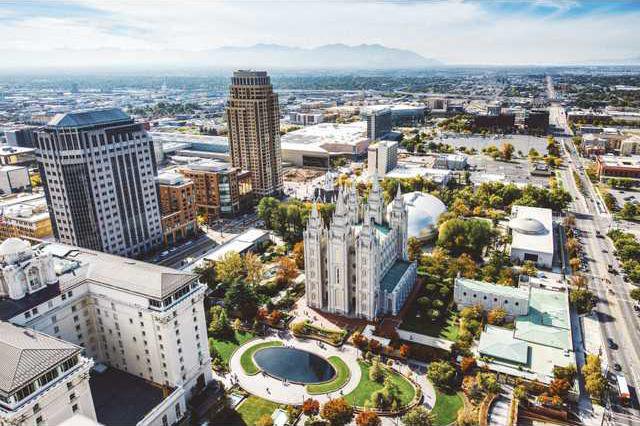Its 2015 do you know where your children are?
Researchers of the Martin Prosperity Institute published an article in The Atlantics CityLab that listed the American metro areas with the most and least amount of children. The article focused on both the major metro areas and the specific towns, suburbs or cities with the most children.
We already know that families with kids typically relocate to the suburbs where they can get more space and access to better public schools, Richard Florida wrote for CityLab. The more interesting questions are which metros and especially which kinds of metros have larger or smaller shares of kids.
The cities with the highest shares of children were more likely to have a larger working class, vote conservatively, be home to more foreign born residents, and have a higher concentration of Latinos, according to the article. The cities with the lowest shares of children were more likely to be known for their retirement communities or college towns.
This research comes at a time when the population share of children under 18 years old has declined overall across the country. CityLab reported that the under 18 population has declined from 25.6 percent in 2000 to 23.3 percent in 2013.
But some cities, like the ones listed below, have a significant amount of children. Here are the metro areas with the largest share of children under the age of 18. Make sure to check out the slideshow at the bottom of this article for the metros with the lowest amount of children.
Salt Lake City
Let's start with Salt Lake City. Children make up almost 30 percent of the Utah capitals metro area population, which means one out of every three people in the state is under 18 years old.
Riverside, California
A little ways west in Riverside, California, about 28 percent of the population is children.
Houston
The warm, desert-like atmosphere of Texas has the third-most amount of children, who make up 27 percent of the population there.
Dallas
Not too far from Houston, the Dallas metro area also has a lot of children, with 27.8 percent of Dallas population being under 18 years old.
San Antonio
Another Texas city makes the list. Children make up 26.8 percent of the San Antonio metro area population.
Memphis, Tennessee
We havent left the Sunbelt yet. In Memphis, children make up 26.5 percent of the population, which means one out of every four people is under the age of 18.
Atlanta
And we continue our tour of the south with Atlanta where children make up 26.4 percent of the metro areas population.
Phoenix
Lets head back West for a second. Not too far from Salt Lake City, which tops the list, Phoenixs children make up 26.3 percent of the population.
Raleigh, North Carolina
Back East, children make up 26.1 percent of the Raleigh, North Carolina, population.
Indianapolis
And in the heart of America, of course there are children. Just over 26 percent of Indianapolis population is children.
Researchers of the Martin Prosperity Institute published an article in The Atlantics CityLab that listed the American metro areas with the most and least amount of children. The article focused on both the major metro areas and the specific towns, suburbs or cities with the most children.
We already know that families with kids typically relocate to the suburbs where they can get more space and access to better public schools, Richard Florida wrote for CityLab. The more interesting questions are which metros and especially which kinds of metros have larger or smaller shares of kids.
The cities with the highest shares of children were more likely to have a larger working class, vote conservatively, be home to more foreign born residents, and have a higher concentration of Latinos, according to the article. The cities with the lowest shares of children were more likely to be known for their retirement communities or college towns.
This research comes at a time when the population share of children under 18 years old has declined overall across the country. CityLab reported that the under 18 population has declined from 25.6 percent in 2000 to 23.3 percent in 2013.
But some cities, like the ones listed below, have a significant amount of children. Here are the metro areas with the largest share of children under the age of 18. Make sure to check out the slideshow at the bottom of this article for the metros with the lowest amount of children.
Salt Lake City
Let's start with Salt Lake City. Children make up almost 30 percent of the Utah capitals metro area population, which means one out of every three people in the state is under 18 years old.
Riverside, California
A little ways west in Riverside, California, about 28 percent of the population is children.
Houston
The warm, desert-like atmosphere of Texas has the third-most amount of children, who make up 27 percent of the population there.
Dallas
Not too far from Houston, the Dallas metro area also has a lot of children, with 27.8 percent of Dallas population being under 18 years old.
San Antonio
Another Texas city makes the list. Children make up 26.8 percent of the San Antonio metro area population.
Memphis, Tennessee
We havent left the Sunbelt yet. In Memphis, children make up 26.5 percent of the population, which means one out of every four people is under the age of 18.
Atlanta
And we continue our tour of the south with Atlanta where children make up 26.4 percent of the metro areas population.
Phoenix
Lets head back West for a second. Not too far from Salt Lake City, which tops the list, Phoenixs children make up 26.3 percent of the population.
Raleigh, North Carolina
Back East, children make up 26.1 percent of the Raleigh, North Carolina, population.
Indianapolis
And in the heart of America, of course there are children. Just over 26 percent of Indianapolis population is children.








